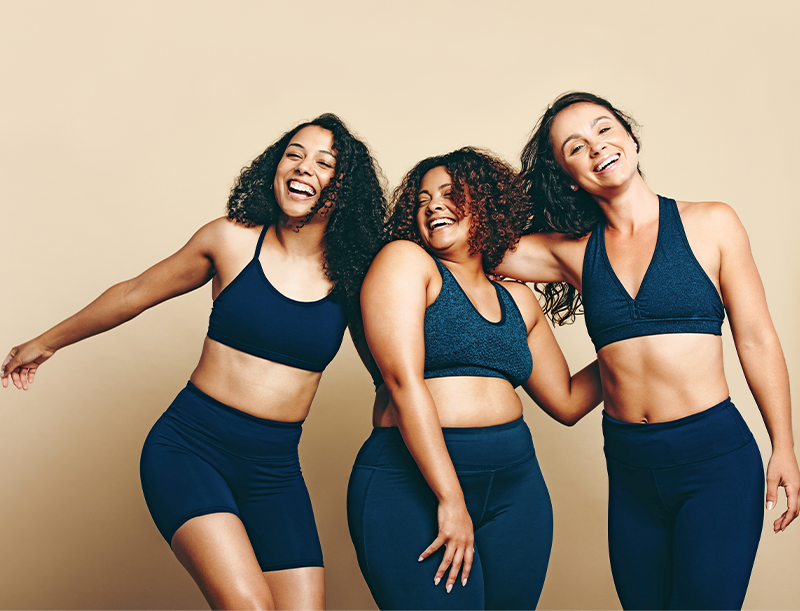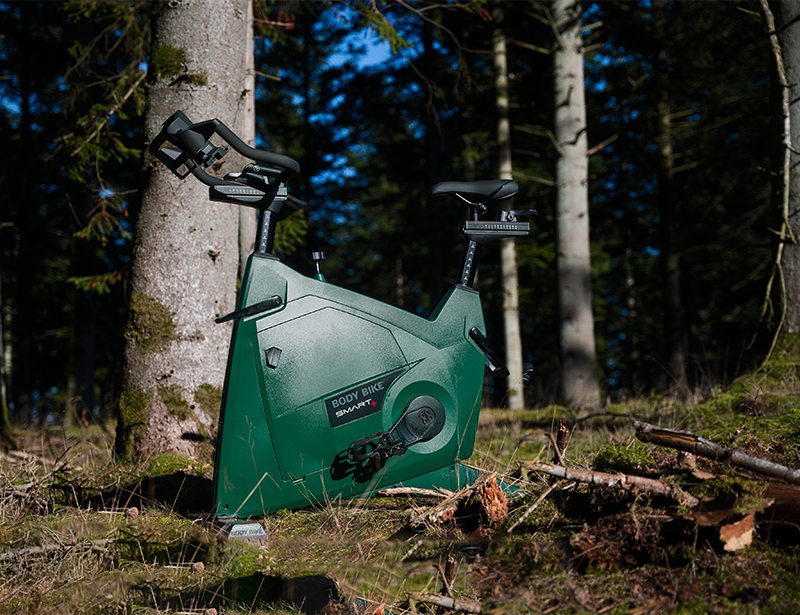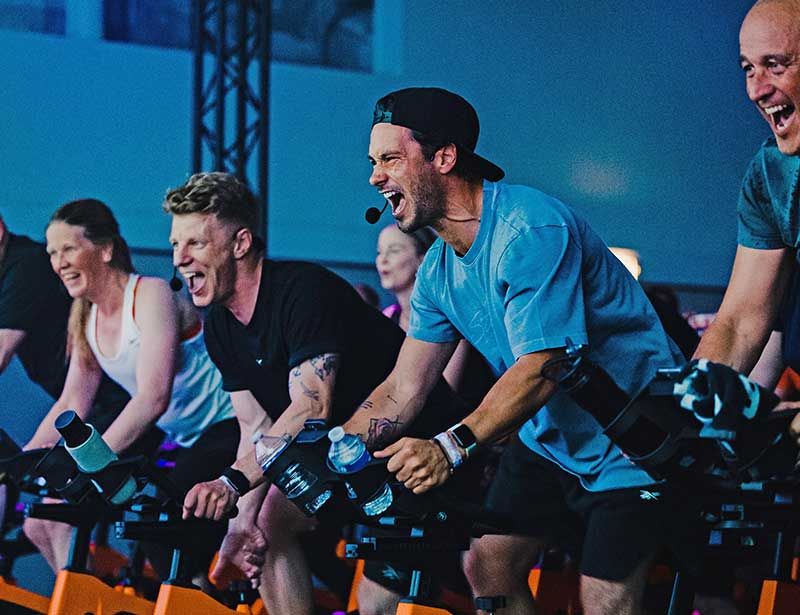Indoor cycling trends
Trending now

#1 Retaining relevance
It’s true that in the US, Mindbody recently reported a 39 per cent drop in cycling class attendance (Jan–July 2022 vs Jan–July 2021). Yet it’s important to note that group cycling wasn’t the only discipline to feel the pinch: yoga was also down 31 per cent, dance 14 per cent, CrossFit 9 per cent. Equally important to note that this is data for a market hit by Flywheel’s demise and SoulCycle’s multiple studio closures.
Meanwhile, other brands are doing well – even in the US. Barry’s is moving ahead with the roll-out of its RIDE x LIFT concept, for example (see trend #7), while Xponential’s CycleBar now has more than 260 studios open and agreements signed to move into Japan, Australia and New Zealand.
And indoor cycling remains the #1 group exercise format in markets like the Netherlands, where concepts such as Holy Ride have been inspired and shaped by customer demand.
So, the fall isn’t universal. Indeed, as Peloton adjusts and restructures for a world in which consumers have a choice about where they exercise, it seems in-person is where it’s at once again.
The key is this: indoor cycling is still very much alive when done well. Whatever their model, fitness facilities must continue to innovate and experiment within their cycle offering to keep it relevant – a go-to workout – in an era in which Experience, with a capital E, is now the customer expectation.
Of course, there’s only so much you can do on a static bike, so experience will lean into the environment, soundtrack, community and vibe you create as much as the programming (which, incidentally, still has scope for innovation – see trends #7 and #10).
As Holy Ride’s Tom Moos told RIDE HIGH earlier this year: “Indoor cycling will become increasingly immersive and experiential. There are still a lot of dark boxes at the moment!”
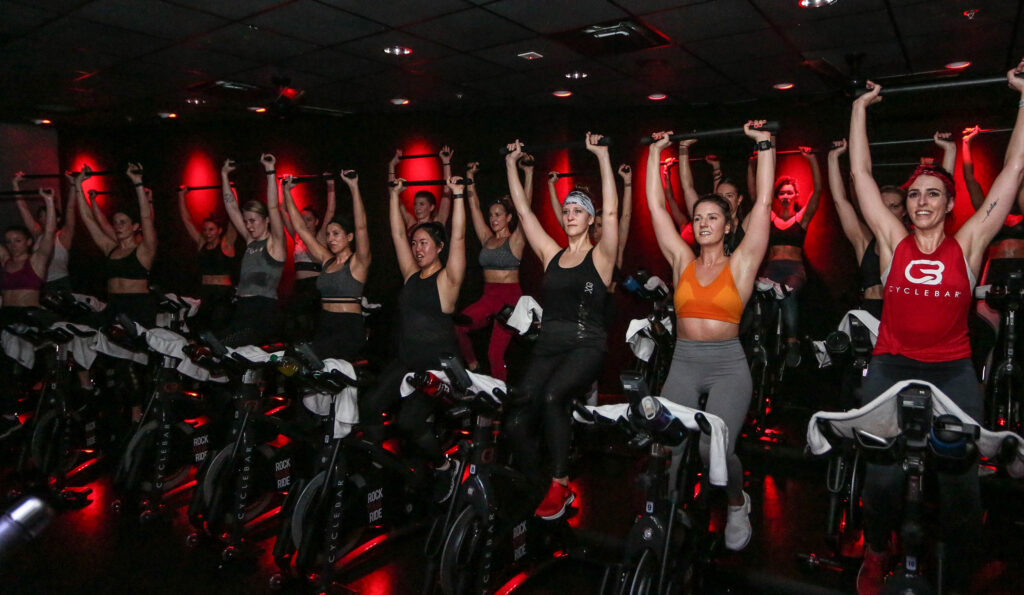
#2 Boutiques buddy up
Ever since the pandemic wreaked havoc on the fitness sector, many standalone – and especially single-discipline – boutiques have been finding it particularly hard-going.
“Even pre-COVID, businesses in our sector had struggled: there were record attendances at boutique studios, but head office costs made it hard to make money,” the founders of UK-based United Fitness Brands (UFB) told us when we interviewed them in May 2022. “We realised there was an opportunity to drive significant economies of scale by joining forces.”
It therefore comes as little surprise that more and more boutique brands are ‘buddying up’, coming under one roof at head office, in-club, or both.
UFB, for example, has now brought together four boutique operations, primarily at a head office level but also via a number of dual-brand locations in London. Its founders told RIDE HIGH they now hope to create multi-brand studios in smaller cities across the UK.
Elsewhere we’re seeing different takes on buddying up. In the Netherlands, Urban Gym Group (UGG) has brought multiple fitness brands under its umbrella, including boutique brand HIGH STUDIOS. Offering strategic guidance, shared resources and a cluster approach to conquer target cities – notably Amsterdam – with its portfolio of brands, UGG has also grown the reach of HIGH STUDIOS by creating HIGH-branded group exercise studios inside its ClubSportive and Trainmore clubs.
“Ever since the pandemic, many standalone and single-discipline boutiques have found it hard-going”
Then there’s newcomer Drop Fitness (see our chat with founder Jeb Balise in our special cost of living supplement: A Global Crisis?). Drop opened its inaugural site in New Jersey, US, in May 2022, bringing together four existing, third-party, best-in-class boutique brands alongside private training and a gym floor. All available on a ‘pay for what you want, when you want’ basis, Drop pays each boutique brand a revenue share.
“It’s a great way for boutique brands to grow and scale across the country, beyond the big cities where they traditionally operate,” says Balise. “For a boutique to come out to the suburbs on its own would cost so much time, energy and money, all for a 2,000sq ft space. Town planning permissions can sometimes be brutal, and doing it for a 25,000sq ft space is much more efficient.”
Expect to see more of this in 2023 as boutiques battle to weather not only the repercussions of the pandemic, but now also the energy crisis, spiralling inflation and expectations of salary increases.
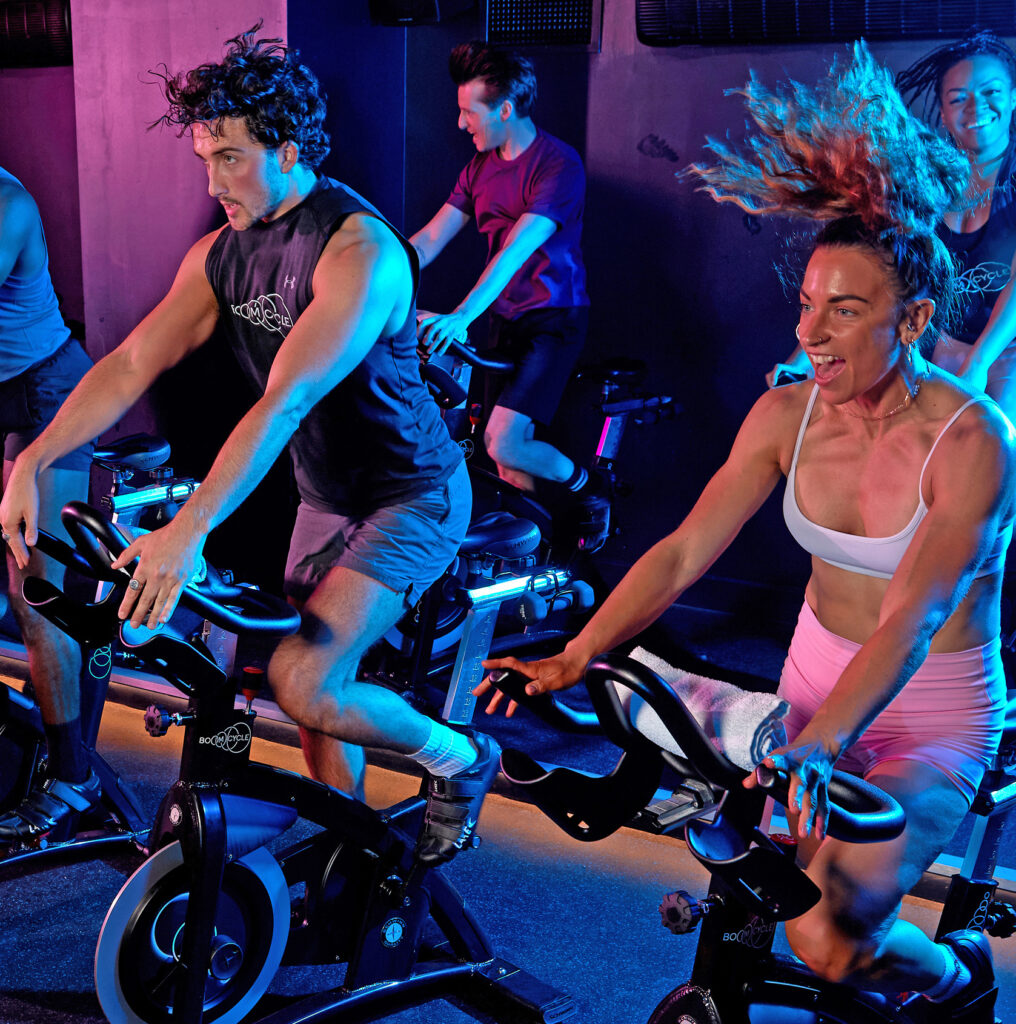
#3 A sustainable agenda
Environmental sustainability has been on the agenda of most businesses for years now, and we’ve seen some moves in the right direction within the indoor cycling sector. Operators such as the UK’s 1Rebel have been free from single-use plastic for a while now, for example, while Terra Hale markets itself as ‘London’s first eco-friendly fitness destination’, generating electricity from its indoor cycling classes (see our special supplement: A Global Crisis?)
From a supplier perspective, BODY BIKE OceanIX is the eco-warrior’s indoor bike – the first in the world to be manufactured using plastic from recycled fishing nets – and in 2021, BODY BIKE also launched a best-in-class eCargo bike. “It’s a bit of a departure from our usual fitness sector territory, but we have the capacity in our factory and it just feels like the next ‘right thing to do’,” said CEO Uffe A Olesen.
But as the energy crisis ramps up, gas and electricity prices threaten the very existence of our sector and the world accelerates towards a climate crisis, clubs can’t view sustainability as a mere passion project. It has to be embedded at the heart of what we do – and as Terra Hale proves, bikes aren’t just energy-efficient thanks to not needing power. They can also be energy generators. Now is the time to explore this potential.
“Bikes aren’t just energy-efficient thanks to not needing power. They can also be energy generators.”

#4 No digital divide
Over recent years, hybrid models have been the hot topic of the fitness sector. Now the buzzword is ‘omnichannel’.
“As the number of channels proliferates, equal importance must be given to digital and in-person,” advised Paul Bowman, CEO of Wexer, in RIDE HIGH #16. “Every customer will use multiple touchpoints and expect to dive straight in to a familiar experience each time.
“The challenge for clubs is to deliver exactly the same user experience whatever the point of entry.”
While we’re seeing a growing number of third parties creating digital content for both in-club and at-home use, Bowman believes clubs’ own star trainers are key to a consistent experience. It’s why Wexer’s ecosystem now allows clubs to stream self-produced content not only to at-home digital platforms, but also onto the big screen of in-club virtual studios.
“Every club operator should maximise opportunities to put their own stars in front of their customers”
“If you’re looking for an advantage over the big digital players and the global fitness influencers, your team of local rockstars with their loyal member followings is it,” Bowman advises. “Every club operator should be maximising opportunities to put these stars in front of customers, both on-site and at-home. And that means creating digital content fronted by them.”
For a great example, look no further than Thailand’s trailblazing Absolute Group, which was quick off the mark in identifying the dual value of digital content for at-home as well as in-club, launching its Absolute X hybrid studio concept in 2022.
“With this second distribution channel, we’re very happy to continue investing in high-quality digital content,” confirms founder and CEO Ben Karoonkornsakul.
It can be an expensive undertaking, yet members will forgive lower production quality if they’re seeing their favourite instructors on-screen. Expect more branded digital experiences that cost-effectively maximise yield and usage of cycling studios, as well as supporting members at home.
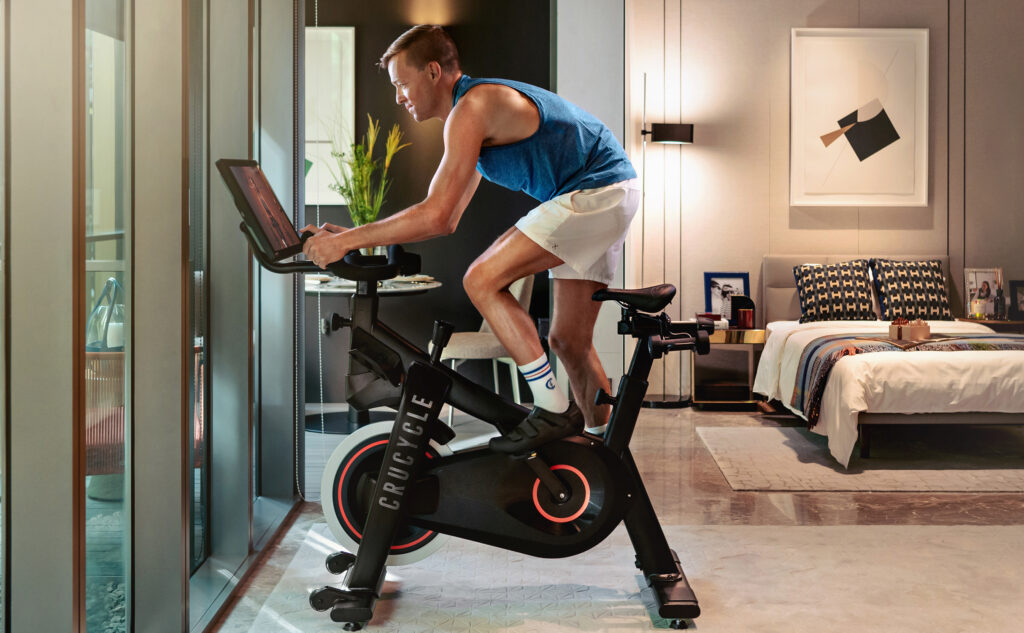
#5 A new reality
In summer 2022, RIDE HIGH spoke to Emma Barry – global fitness authority and renowned group exercise expert – and Les Mills legend Steven Renata about indoor cycling past, present and future.
In our chat, Barry was hugely enthusiastic about the digital innovations coming down the line for group cycling. Some of the topics she touched on might reasonably expect to be a trend in their own right, but in our top 10 we’ve pushed them all together into one digital innovations trend that hints at an exhilarating future for indoor cycling.
We’re talking AR, VR, the metaverse. “Anything that brings digital enhancement into the real world for an extended, mixed reality – especially when it includes a social element of cycling together, remotely,” says Barry.
“We’ve seen the rise and fall of Peloton and friends, but they’ve unquestionably given a huge nod to health and wellness along the way, driving up awareness of fitness and just how good the experience can be, as well as showing us all how ‘sticky’ an online community can be.”
She continues: “Once they get the eyewear down, the bike is the perfect tool for AR and VR. We already wear sunglasses when we’re riding outside, so once the headsets aren’t so large and sweat-inducing, that’s going to be very interesting. We’ll literally be able to be in another world as we cycle.
“AR will be able to transpose all kinds of information and metrics to those who are motivated by data”
“AR will be able to transpose all kinds of information and metrics to those motivated by data: personalised power output, position in the pack, headwind, lighting, direction cues and so on. VR will be able to emulate and enhance existing worlds, such as the great races around the globe: the Ironman World Championship in Kona, the Tour de France, the Red Bull UCI Pump Track World Champs. We’ll be able to achieve unlimited participation and presumably get to sync data to achieve validated comparison.
“Weaving in and out of the metaverse – the meeting place of different realities – will become more seamless and enhanced over the next 20 years as we take our data and avatars with us across the various worlds to achieve our own unique goals.
“Finally, one really cool thing I saw at CES 2020 was Delta Airlines’ unveiling of Parallel Reality, designed to tailor a passenger’s experience using biometrics. We’re talking complete immersion in an opt-in, personalised experience – and it’s now being trialled at Detroit airport.
“Essentially, multiple passengers can look at the same screen but only see their own unique travel data: their flight information and directions to the gate, weather at their final destination, directions to a Sky Club – all in the language of the passenger’s choice.
“It’s not too much of a stretch to see how the fitness data we already cast to screens – heart rate, for example – could be expanded on and personalised in an equally meaningful way.”
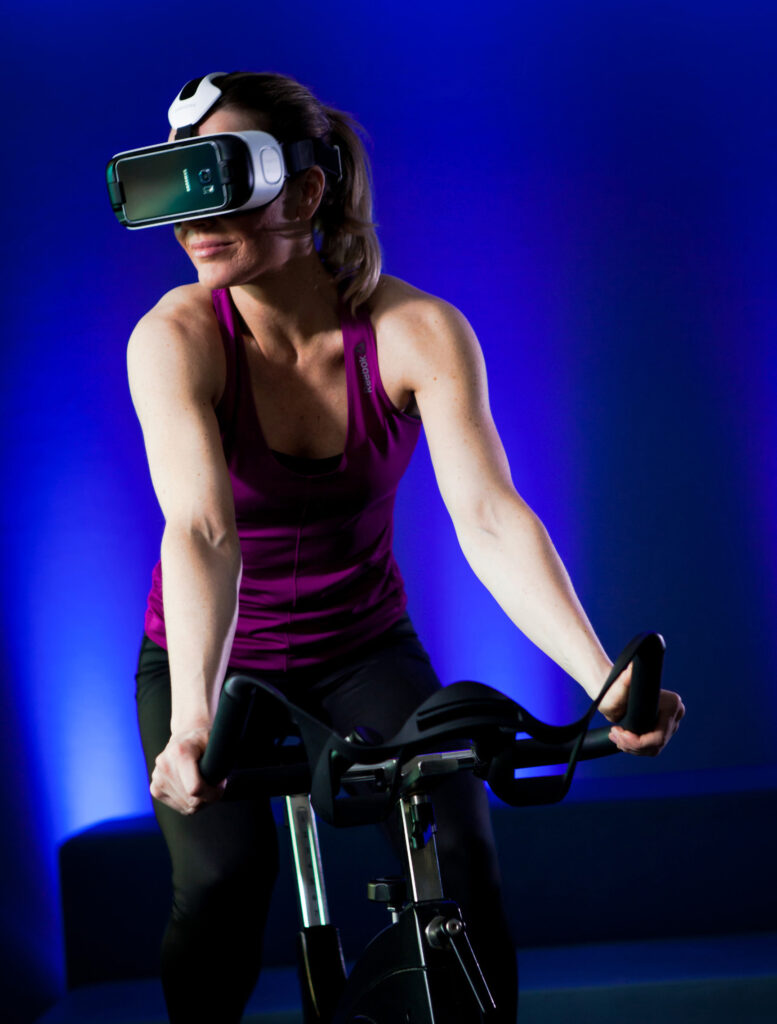
#6 Self-determination
While it’s true that not everyone wants to focus on metrics in their workouts – it’s why rhythm cycling has become so popular the world over – nevertheless there are many fitness fans around the world who like to keep track of their progress. And of course, whether you’re an app developer or club operator, this data can be gold dust; used well, it is the source of unparalleled behavioural insights and the basis of a personalised experience.
Yet the question remains: who owns this data? And increasingly the answer is: the individual. If you buy into that – and at RIDE HIGH, we do – then our role as fitness providers must be to help people make sense of their data, giving them the insights and understanding they need to plot their next steps, without overstepping the privacy mark.
This will be a challenge as exercisers increasingly mix and match workout locations and platforms; it will first require a willingness to openly share data across platforms, so the individual can opt into and be presented with one cohesive picture of their efforts.
This is why BODY BIKE has already done away with consoles, instead allowing exercisers to download its app and use their own mobile phone as their console. They then immediately take their data away with them at the end of each workout. It’s also why the BODY BIKE Strava club was created, allowing exercisers to upload their BODY BIKE indoor cycling workouts into their Strava account. They can then share workout data with fellow enthusiasts and access a full record of all their cycling sessions in one place.
We need more of this moving forward, putting members and their progress first by making data sharing easier – especially if we are to avoid tech fatigue as digital solutions continue to proliferate and it becomes harder and harder to access one clear picture.
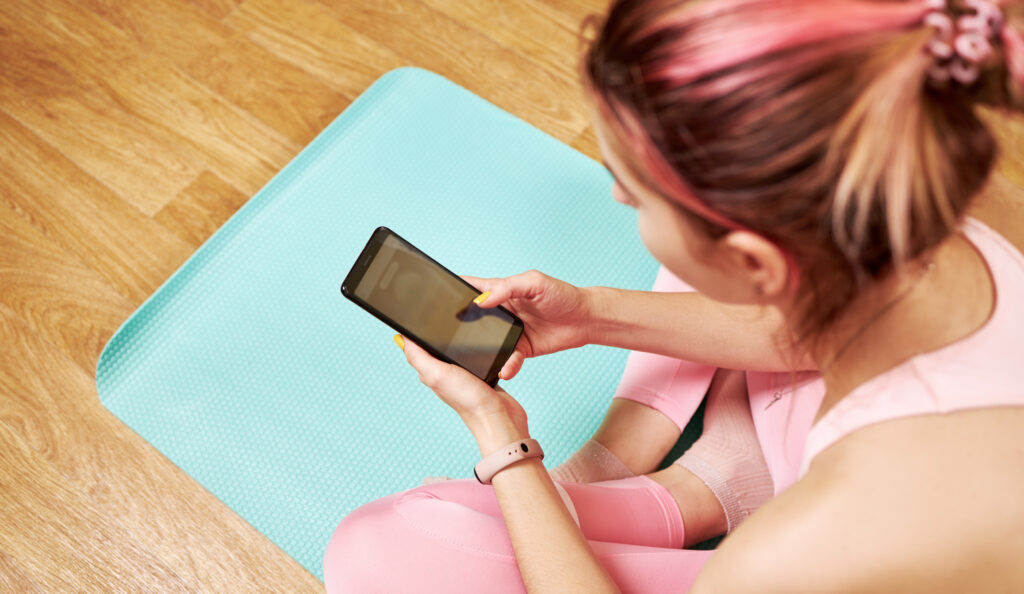
#7 Fusion workouts
We’ve reported previously on the growth of fusion cycling classes and now, in 2023, this trend looks set to go up another gear, with the likes of Barry’s rolling out RIDE x LIFT.
The class follows Barry’s tried-and-tested formula, whereby members alternate between cardio and strength-based programming. In this case, however, the bike replaces the treadmill of the brand’s signature bootcamp class, making for a more accessible and lower-impact workout.
Why is this trend so interesting? Because it ticks so many boxes: a chance for operators to create something unique for their clubs – a signature, branded experience – and for members to take part in a ‘bang for their buck’ workout that keeps them engaged, gives them a great all-round workout and offers high perceived value for money.
As clubs continue to innovate to keep their cycling workouts fresh, fusion classes will become an increasingly popular tool.
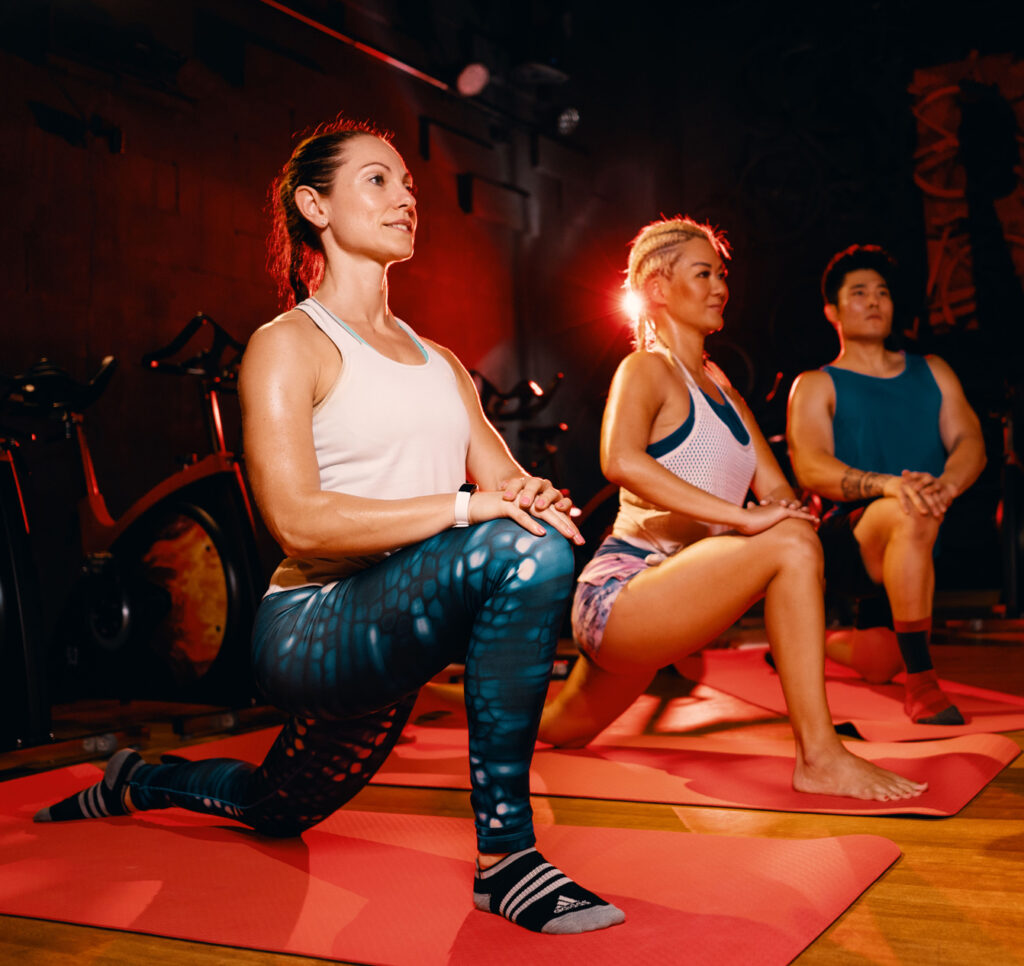
#8 An educational experience
The future of indoor cycling will, we hope, see instructor education become more specialised.
RIDE HIGH recently spoke to Angela Reed-Fox of the Indoor Cycling Institute, who told us: “Many instructors just want to excel at indoor cycling: the discipline is heading into its own space and that’s entirely right.
“I believe it’s outdated to expect instructors to also have a certificate in gym instructing, PT or exercise to music. Cycling shouldn’t be CPD on top of one of those qualifications. Rather, there should be regularly updated, indoor cycling CPD on top of a dedicated, entry-level indoor cycling certificate.”
Hear absolutely hear. For an excellent discussion on how indoor cycling education and qualifications need to evolve to give us the instructor workforce we need for the future, check out our recent panel discussion here.
“Many instructors just want to excel at indoor cycling: the discipline is heading into its own space and that’s entirely right. It shouldn’t be CPD on top of other qualifications”
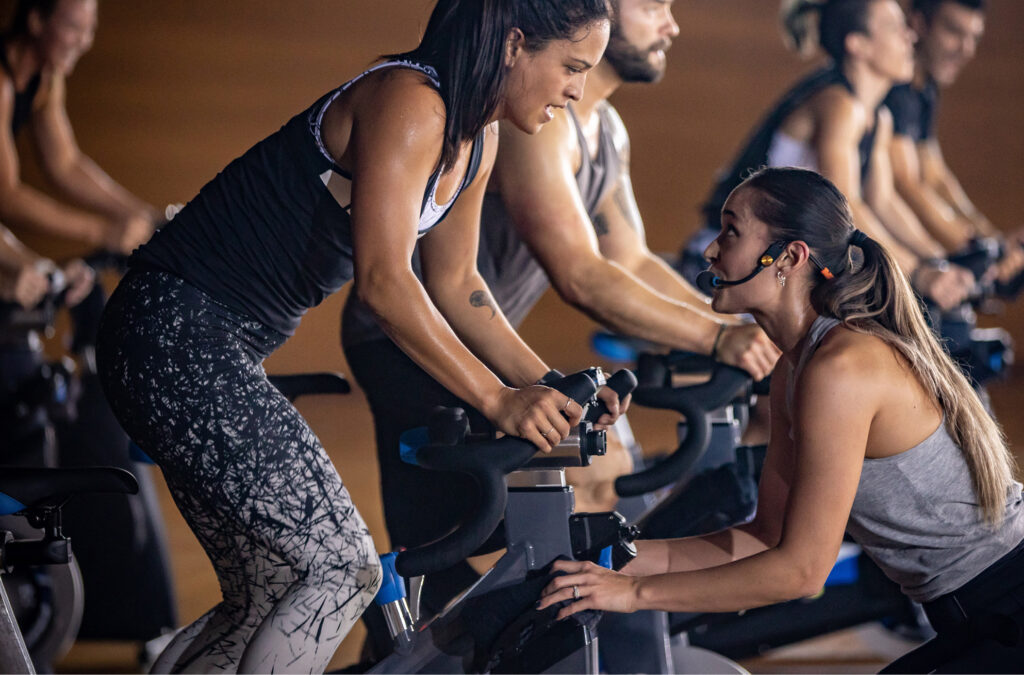
#9 Recovery-plus
Recovery is one of the buzzwords in the fitness sector right now; RIDE HIGH has already reported on how this is impacting programming in the indoor cycling arena.
But what about instructors? For a long time almost disregarded in this respect – expected to simply keep going, churning out class after class after class with little rest – attention is finally turning to helping indoor cycling instructors avoid downtime through illness and injury, and ultimately extend their careers.
In the UK, Susie Millen’s My Vocal Fitness focuses on preserving instructor voices. RIDE HIGH stalwart Noël Nocciolo does similar in the US under the banner of PEP for FitPros.
“As fitness professionals, we learn about almost every muscle in the body,” says Millen. “Rarely, though, are we taught how to use our voice or a microphone effectively. The result: instructors across the planet aren’t vocally ready to teach the volume of classes they’re timetabled to deliver each week. Their voices become unreliable, deteriorating, even lost.”
Meanwhile, power training expert Hunter Allen recently offered RIDE HIGH some incredible insights into the physiological strain placed on cycling instructors’ bodies, in a fascinating feature on the Training Stress Score.
“After six weeks of instructing two cycling classes a day, an instructor’s chronic training load could be 160 – the same as a pro cyclist at the end of the Tour de France,” he explained. Little wonder, then, that injury and illness are so common among frequently timetabled cycle studio stars.
Our view: when it comes to our workforce, it shouldn’t just be about recovery. We need to see a much greater focus on prevention of injury and strain, bringing longevity to instructors’ careers in a healthy and sustainable way.
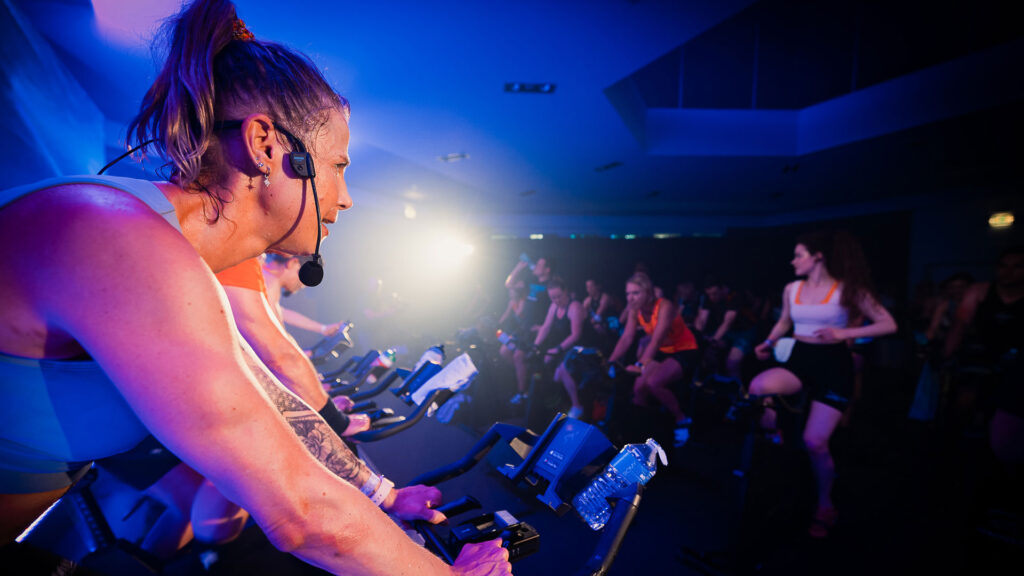
#10 A broader church
Over the last couple of years, we’ve seen fitness newcomers finally turning to our sector, their newfound appreciation of our value born from the pandemic. In turn, a more diverse global member base is gathering – one that spans a broad range of fitness levels, experiences and expectations.
On the one hand, says global fitness authority Emma Barry, there are now more people enjoying ‘The Sport of Fitness’ – being fit for fit’s sake and finding a favourite exercise genre, rather than training to be fit for a sport.
Yet at the same time, we’re also in an era when – still jaded by the pandemic – many are exercising for reasons that are as much mental, emotional and even spiritual as they are physical. “People are looking for entertainment, they’re looking for release, and most of all, at this time in history, they’re looking for joy and hope,” confirms Barry.
This diversity in the member base holds an important lesson for indoor cycling instructors and providers, as Tash Marshall Bean explained in a recent interview with RIDE HIGH: “With the pandemic bringing a wave of new people into fitness, it’s more important than ever that we take classes back to basics.
“I’m currently seeing far too many instructors making the choreography too complicated for their riders and leaving people behind. Every single participant must feel successful, and instructors must (re)learn how to integrate new riders with well-versed riders to achieve this.”
“The more generic the experience, the less likely you are to really engage someone. We need targeted classes.”
Even better, said Louise Ager in the same panel discussion, would be a return to “diversity in class styles to support a broader audience in indoor cycling”.
She added: “The more generic the experience, the less likely you are to really engage someone. We need targeted classes that have a purpose and an intentional audience: classes for beginners, for overweight people, for seniors, for endurance enthusiasts, for those short of time, for fans of different music genres.”
This conscious targeting is exactly what House of Workouts has done with the launch of its new SclptCycle programme.
One thing is for sure: moving forward the indoor cycling sector must work to ensure its product delivers strongly to an increasingly diverse audience.
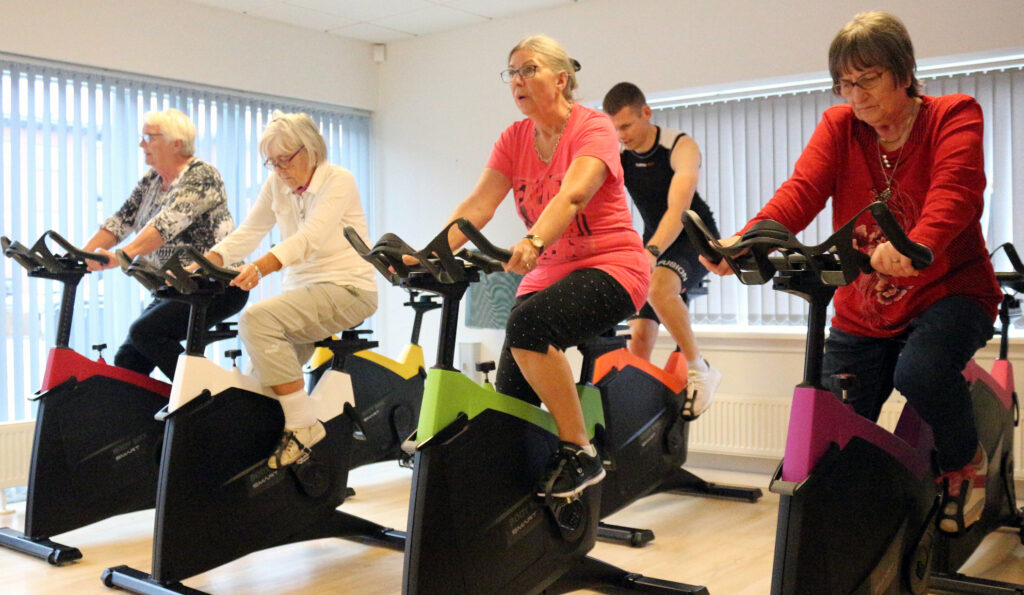

Conceived, powered and funded by BODY BIKE®, RIDE HIGH has a simple mission: to celebrate and champion the very best of indoor cycling, sharing ideas, stories and experiences from around the world to inspire the sector on to even bigger and better things. Subscribe for free by leaving your details below and we'll send indoor cycling's hottest news direct to your inbox three times a year.

